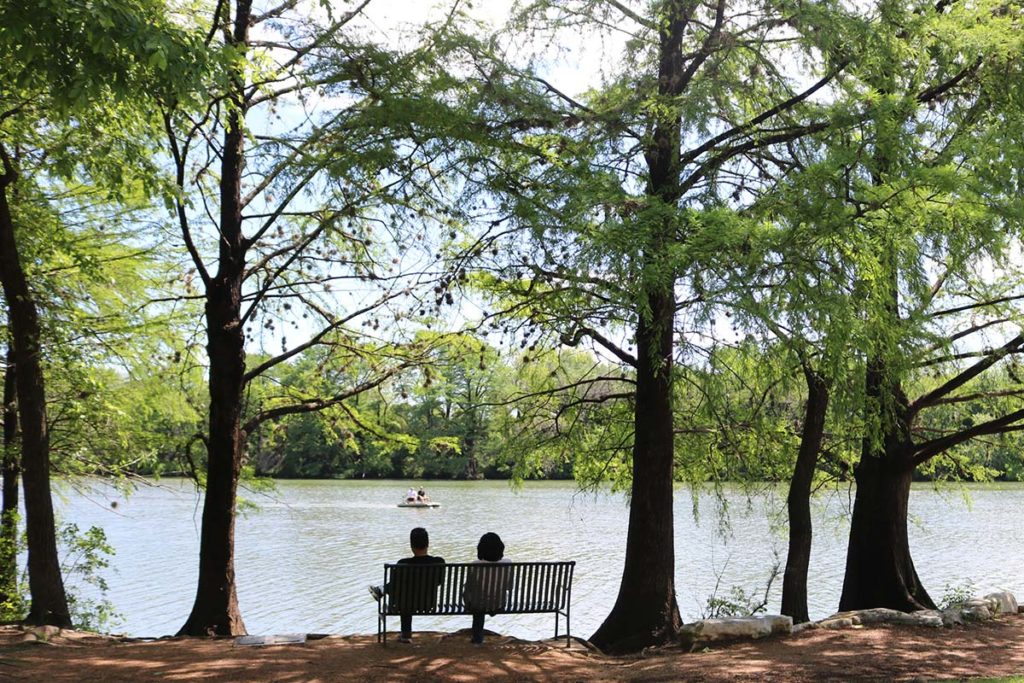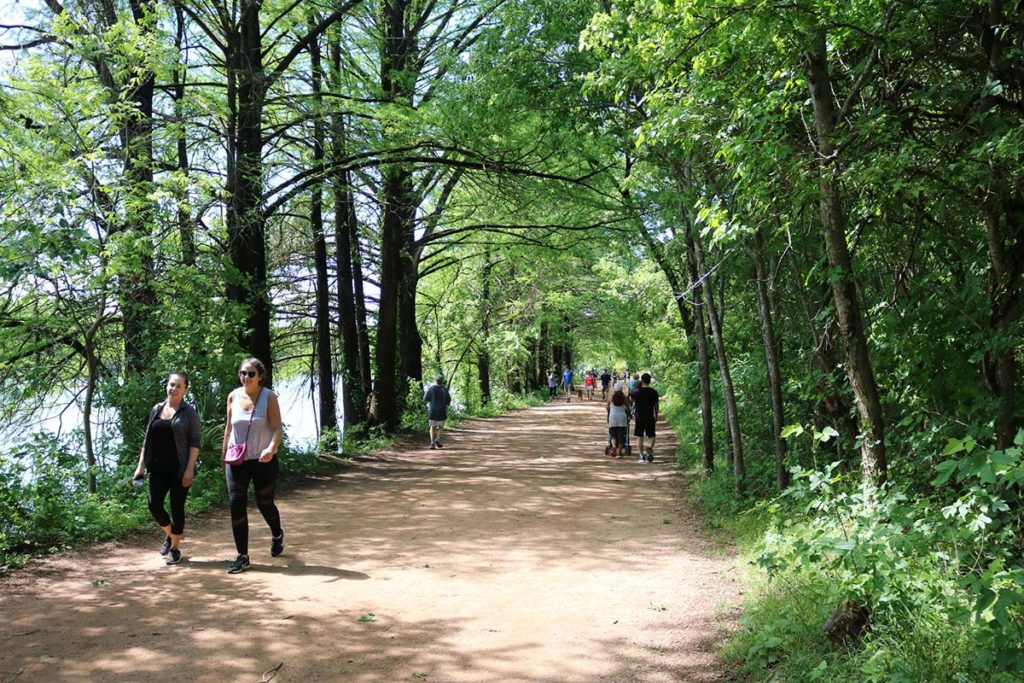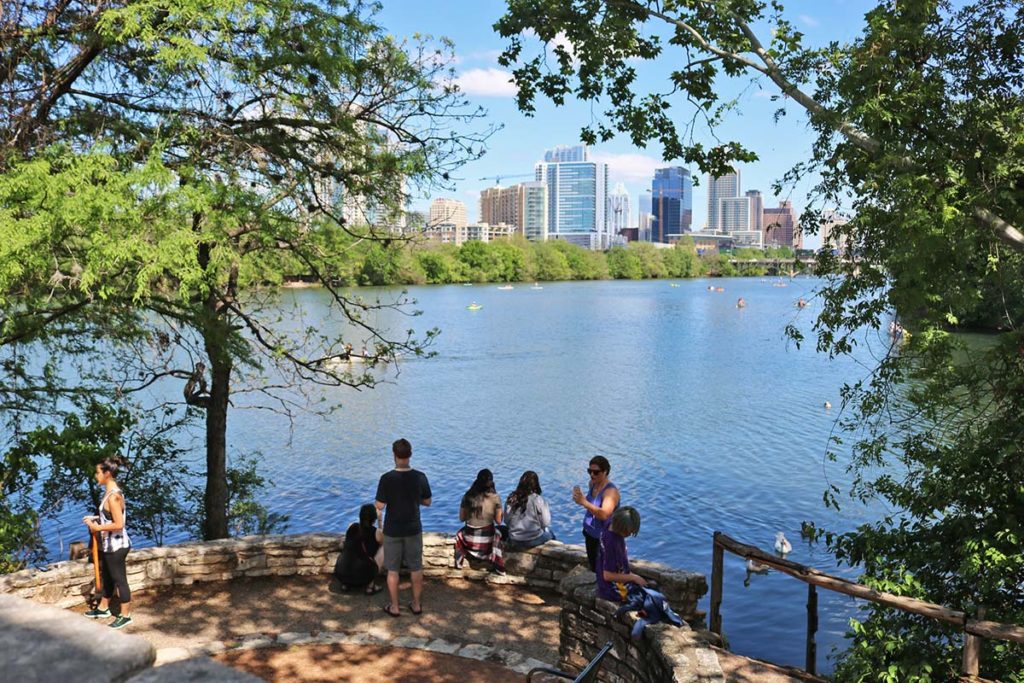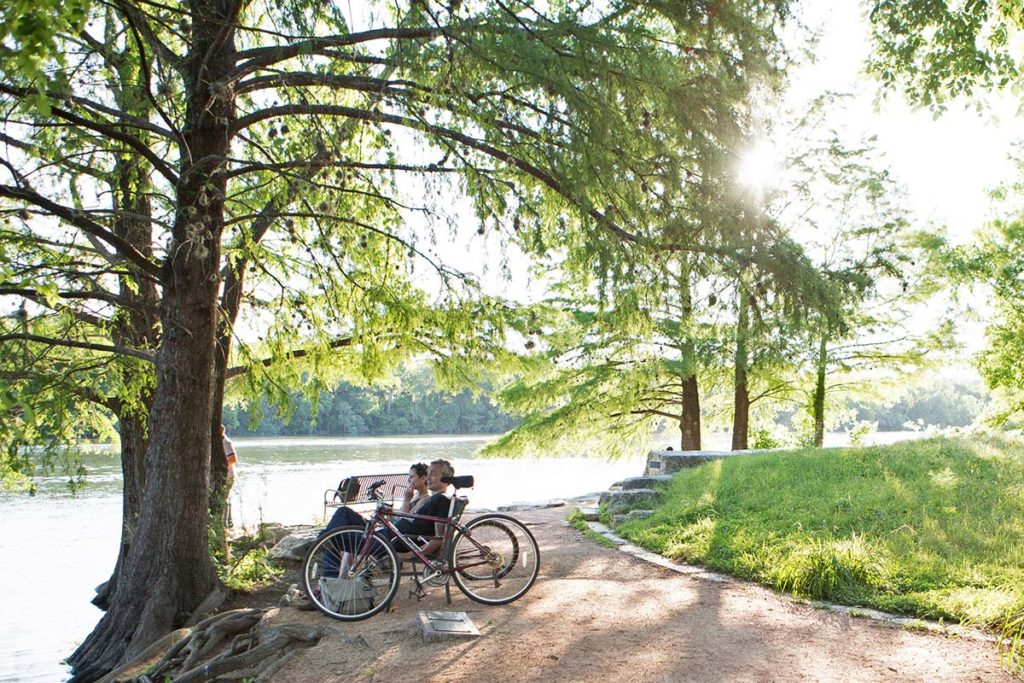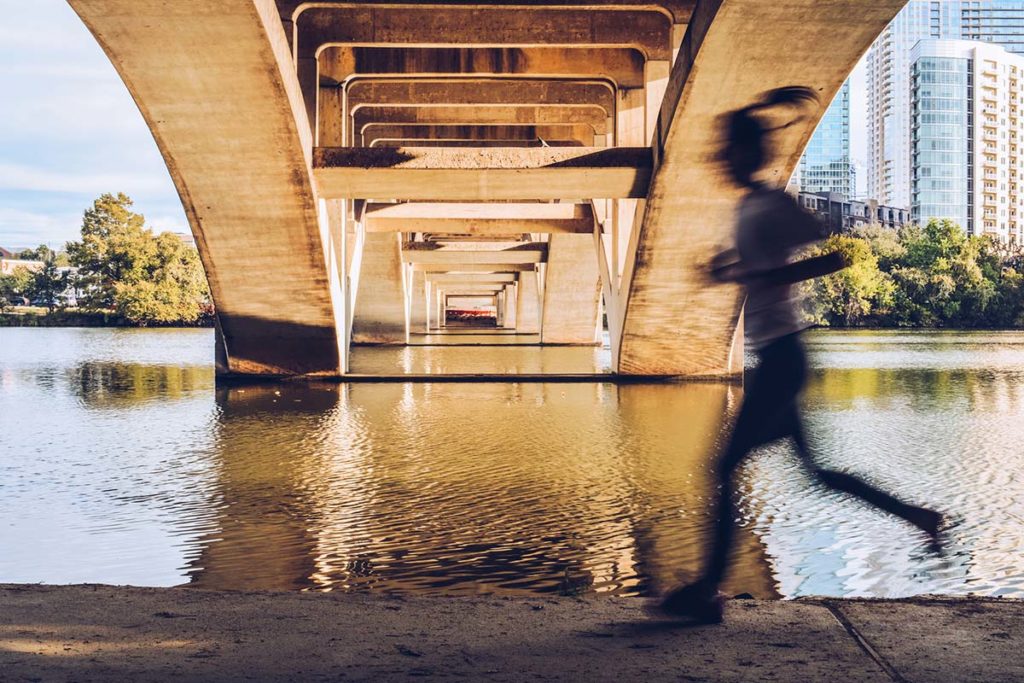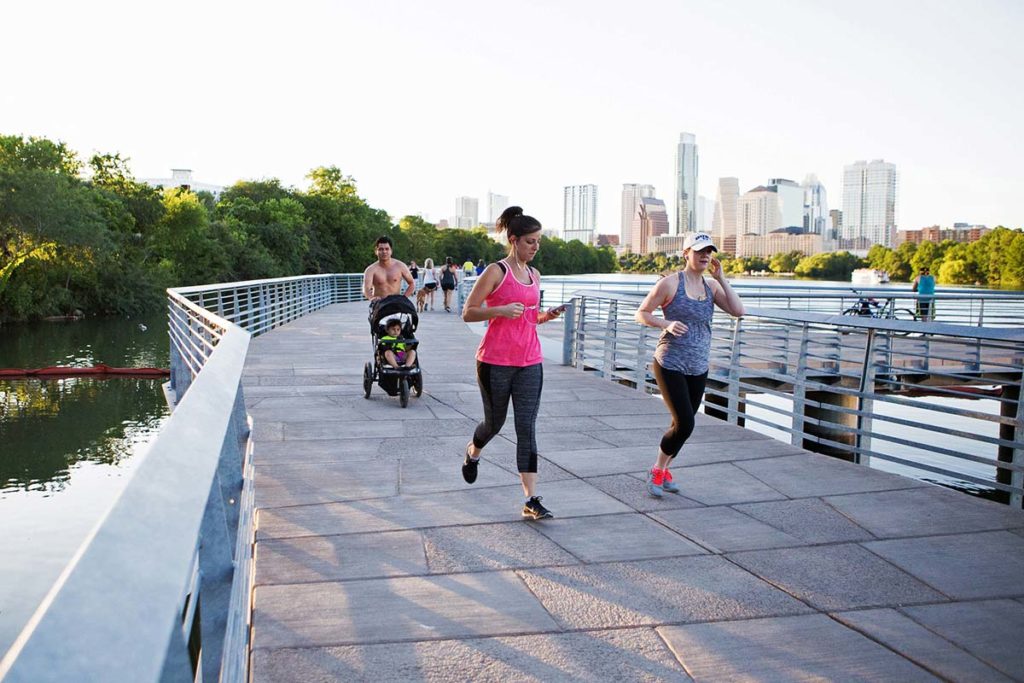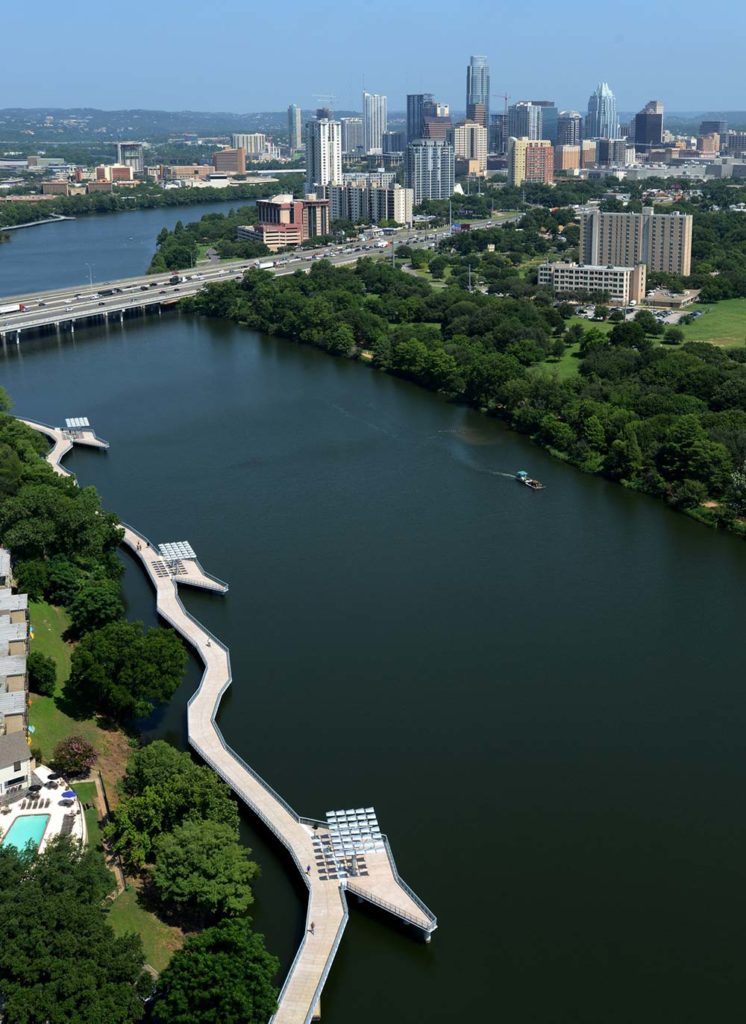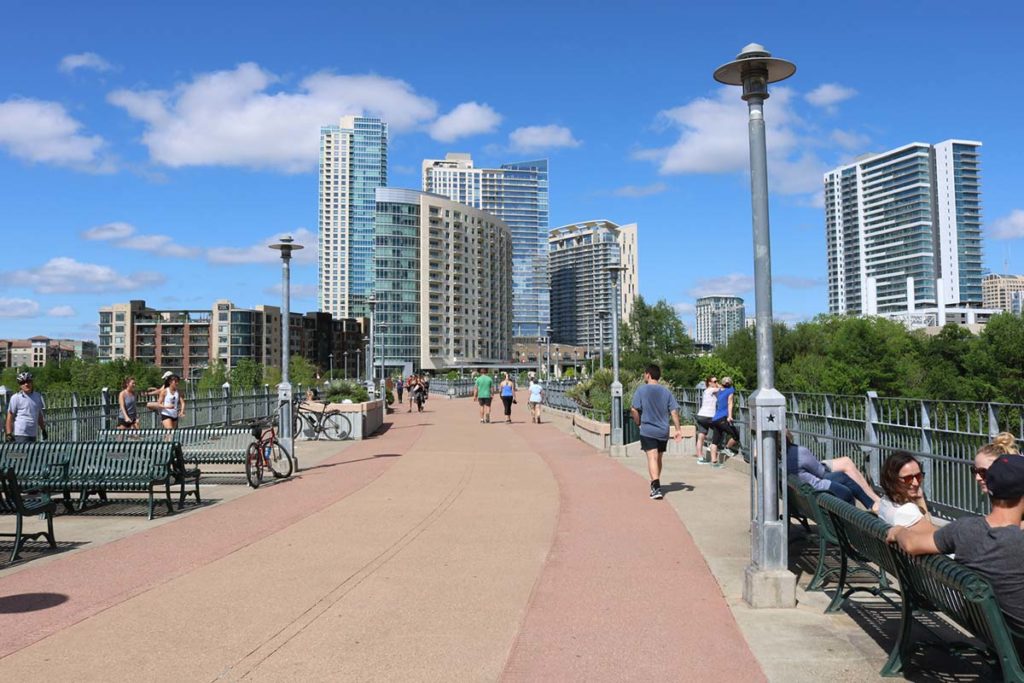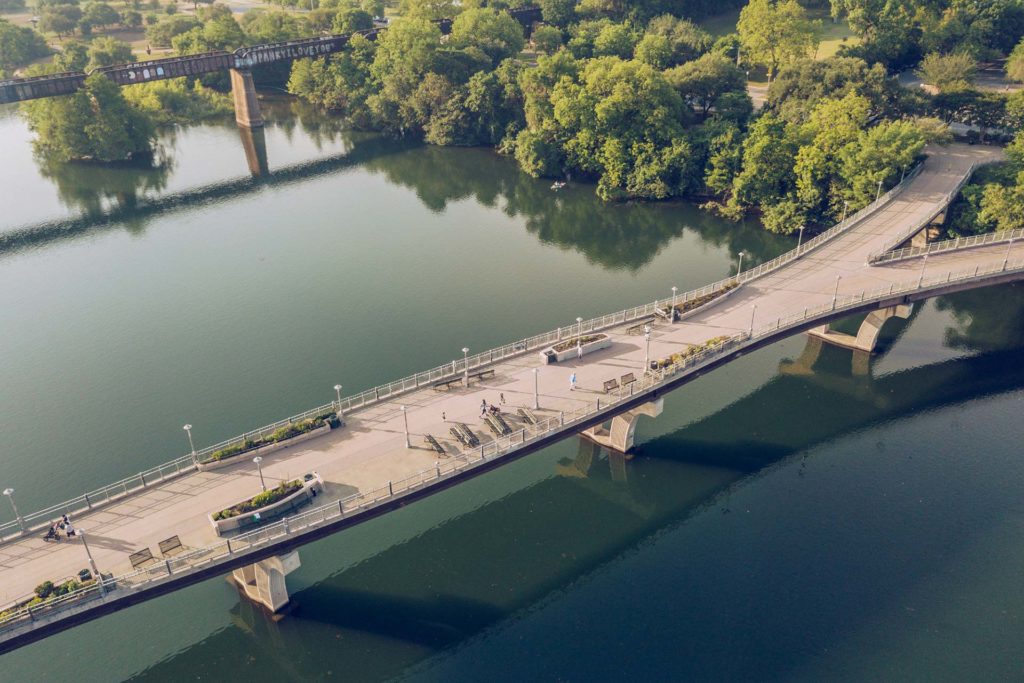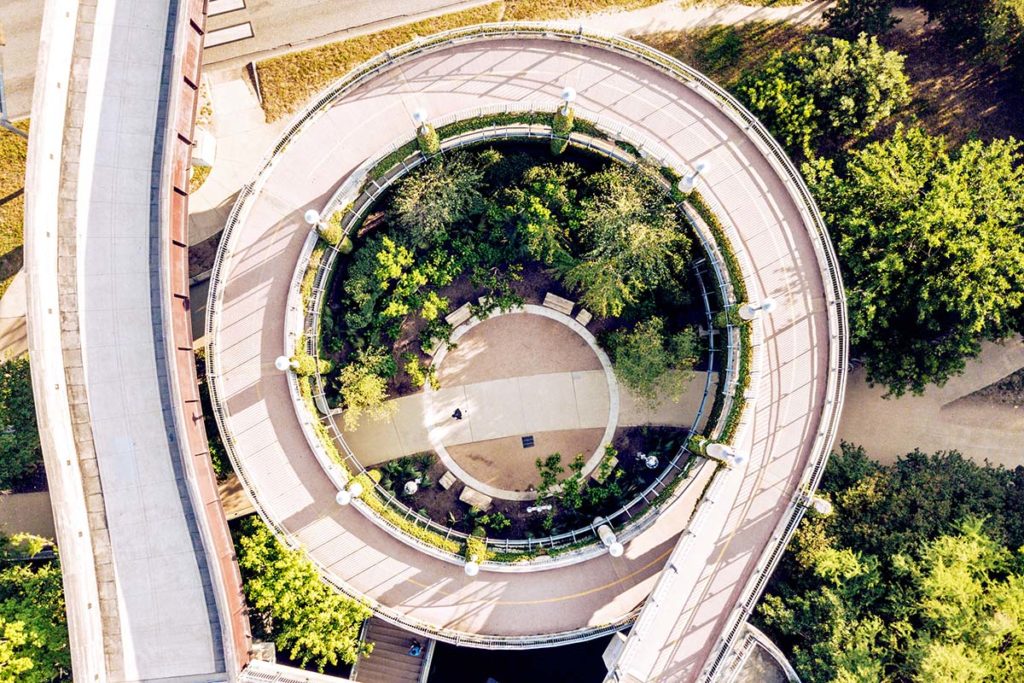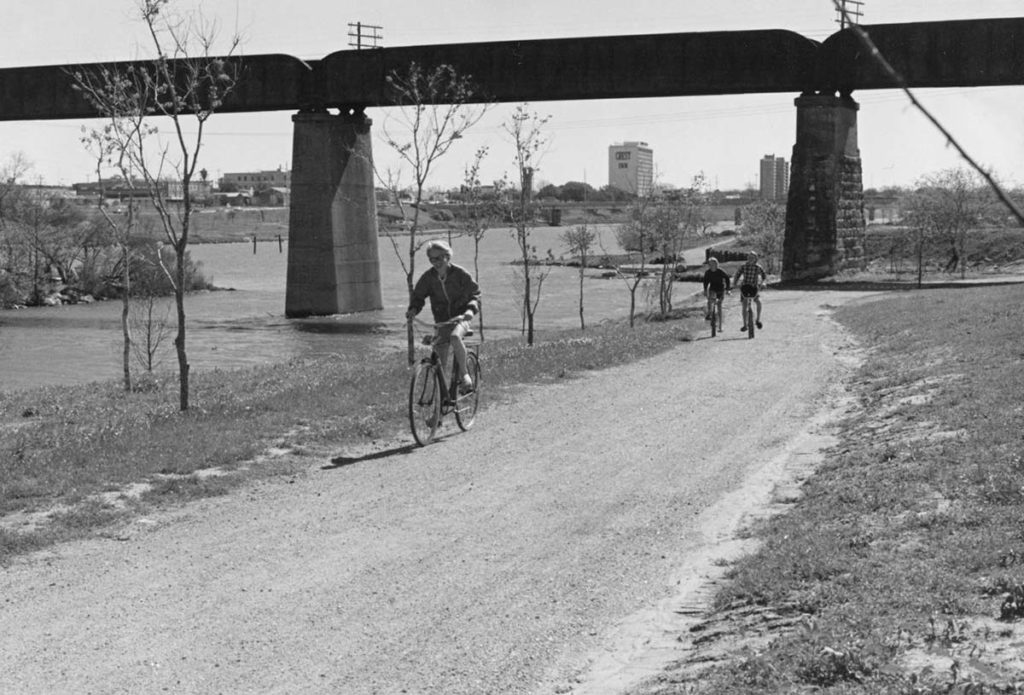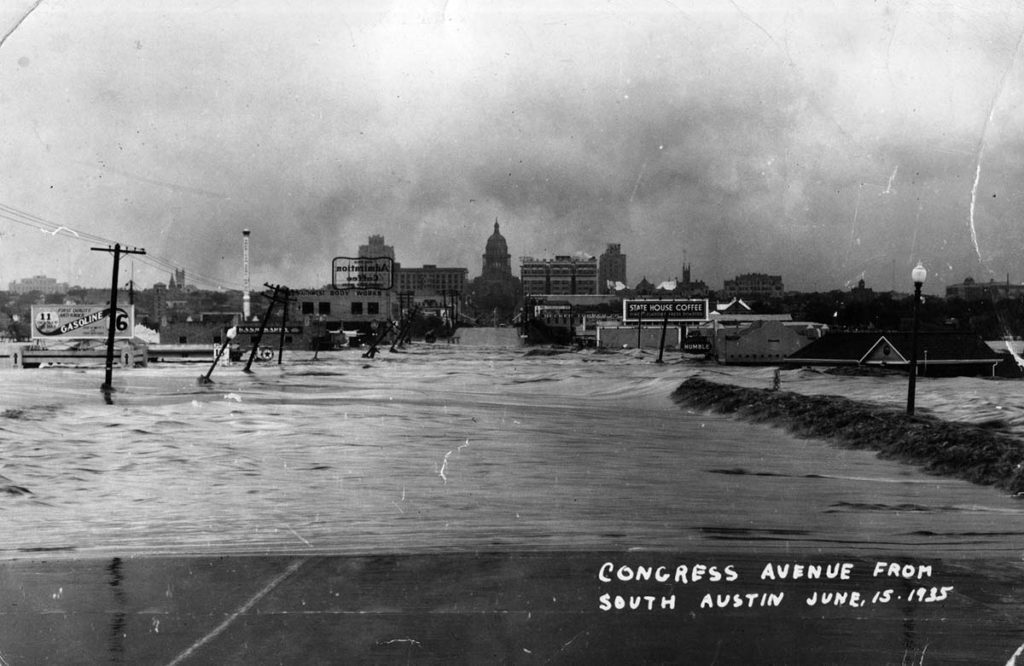- Built:
- 1960–present
Description
The Ann and Roy Butler Hike-and-Bike Trail is a 10.2-mile long path that forms a continuous loop around Lady Bird Lake, a reservoir encompassing a six-mile stretch of the Colorado River. The trail is jointly maintained by the City of Austin Parks & Recreation Department and a collective of nonprofit groups. The trail is Austin’s most popular recreational area, with over 4.4 million visits annually.
Placemaking
One characteristic that makes Austin a uniquely attractive place to live is the prominent presence of natural features in the city’s urban center. The Ann and Roy Butler Hike-and-Bike Trail represents the best that Austin has to offer: outdoor recreation, scenic beauty, and a diverse mix of people. Standing here on a pleasant day, you can see people of all ages hitting the trail, and hundreds of colorful kayaks and stand-up paddleboards dotting the surface of the water (motorboats are strictly prohibited). But the trail and the lush landscape surrounding it did not happen overnight; they are the hard-fought result of decades of work by both public and private institutions.
Lady Bird Lake is actually a reservoir of the Colorado River formed to provide a source of cooling water for the now-decommissioned Holly Power Plant in East Austin. Prior to the reservoir’s creation in 1960, the banks of the wild river were stripped bare by frequent flash floods. The damming of the river, which allowed the flow of water to be regulated, paved the way for the creation of a recreational park.
Originally known as “Town Lake”, the reservoir was renamed in 2007 following the death of First Lady Claudia Alta Taylor “Lady Bird” Johnson, who played an integral role in transforming the lakeshore from a treeless floodplain to the crown jewel of Austin. Drawing inspiration from the Thames Path, a vegetated long-distance walking trail in the heart of London, Lady Bird teamed up with Mayor Roy Butler and his wife Ann to form the Town Lake Beautification Committee in the 1970s, and used her considerable connections to launch a massive fundraising effort.
The Committee built on the work of Roberta “Bobbie” Crenshaw, chair of the Parks & Recreation Department, who spearheaded early efforts to create parkland surrounding the lake (for more information, visit the overlook dedicated to Crenshaw at the southwest corner of Congress and Cesar Chavez). Enlisting the help of local gardening clubs, the Committee completed the first sections of the trail and planted over 3,600 trees (today there are over 10,000 trees—all meticulously inventoried and geolocated).
Since 2003, Austin’s prized natural feature has been maintained by The Trail Foundation, a nonprofit organization, in conjunction with the City of Austin. Several pedestrian bridges now connect the north and south shores, while local architects have contributed pro bono design services for several award-winning, bespoke restrooms. In 2014, the last gap in the trail was closed by the completion of a 1.3-mile boardwalk (just visible on the south shore looking east from the Congress Avenue Bridge).
While Austinites often observe the beauty of Lady Bird Lake by car as they commute over one of several north-south bridges, the best way to experience the lakeshore is to get up close and personal. Now go take a hike! – Bud Franck
Austin History Center, The Trail Foundation
